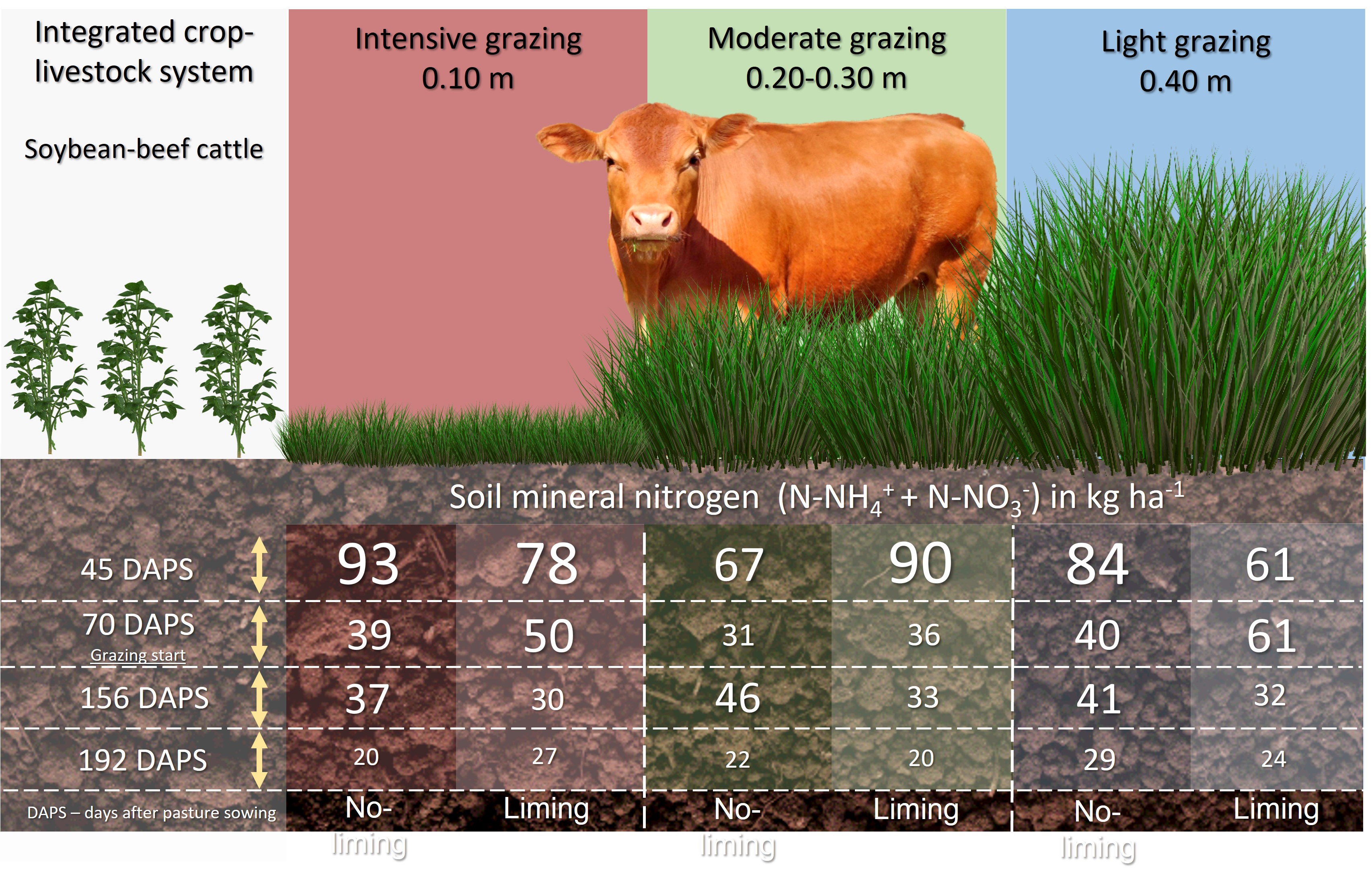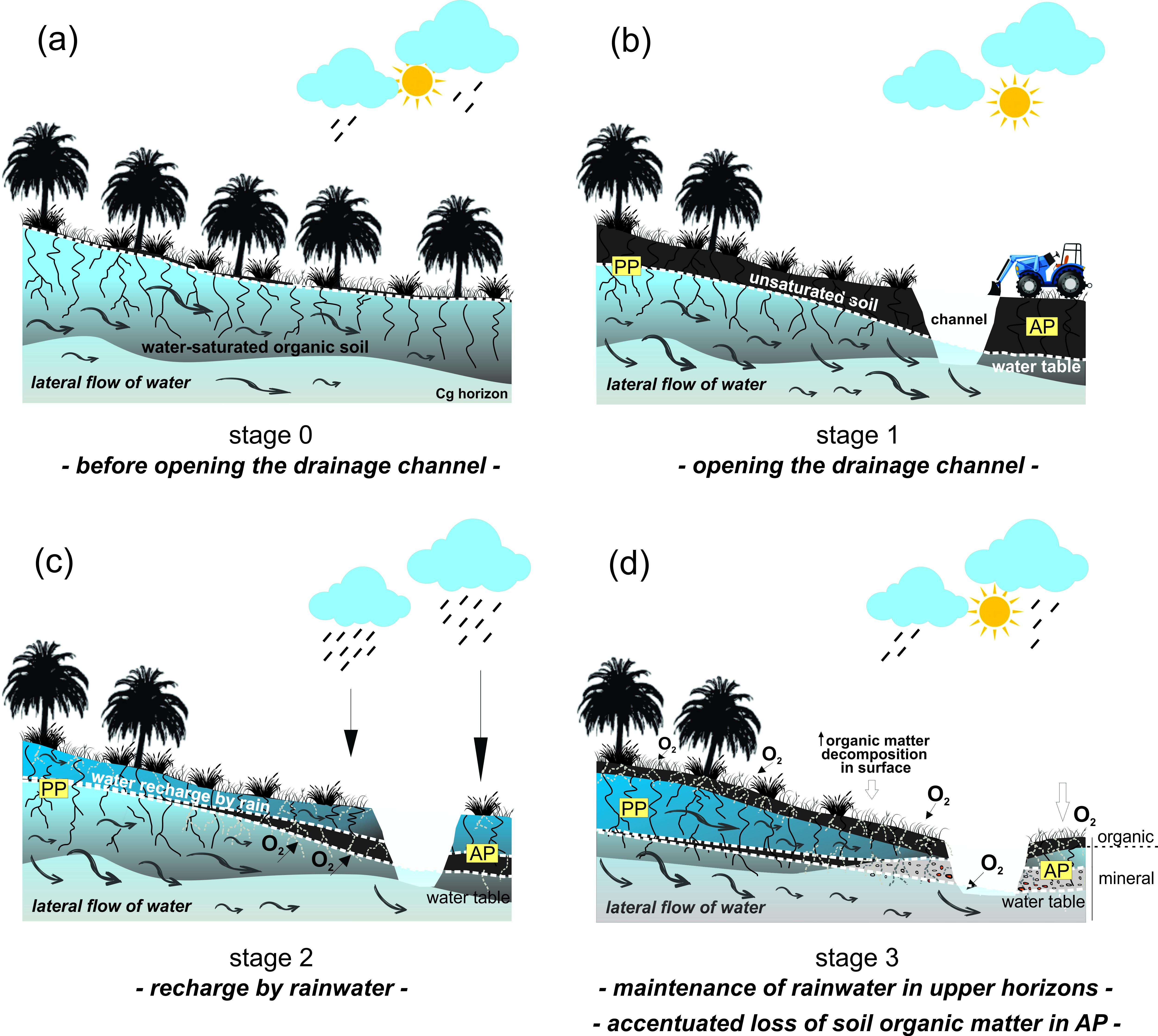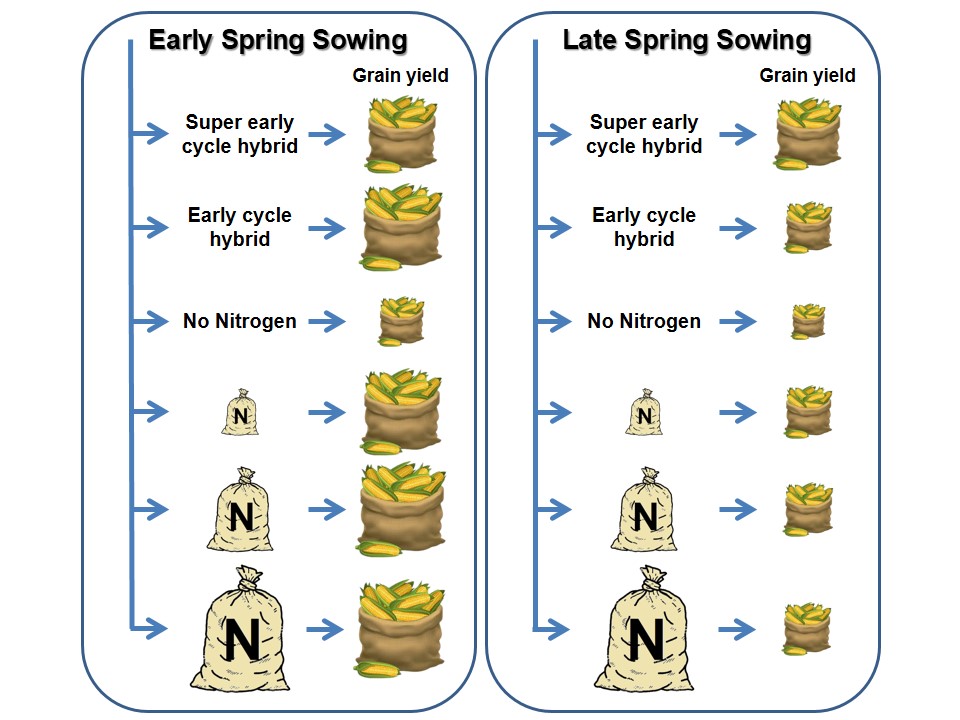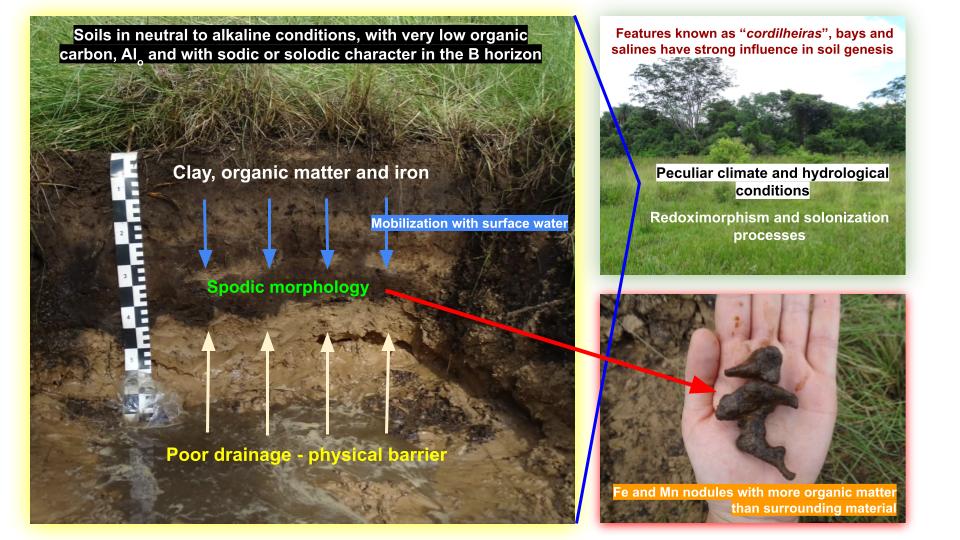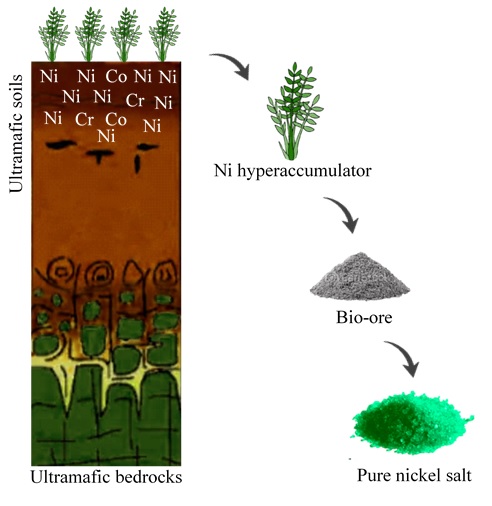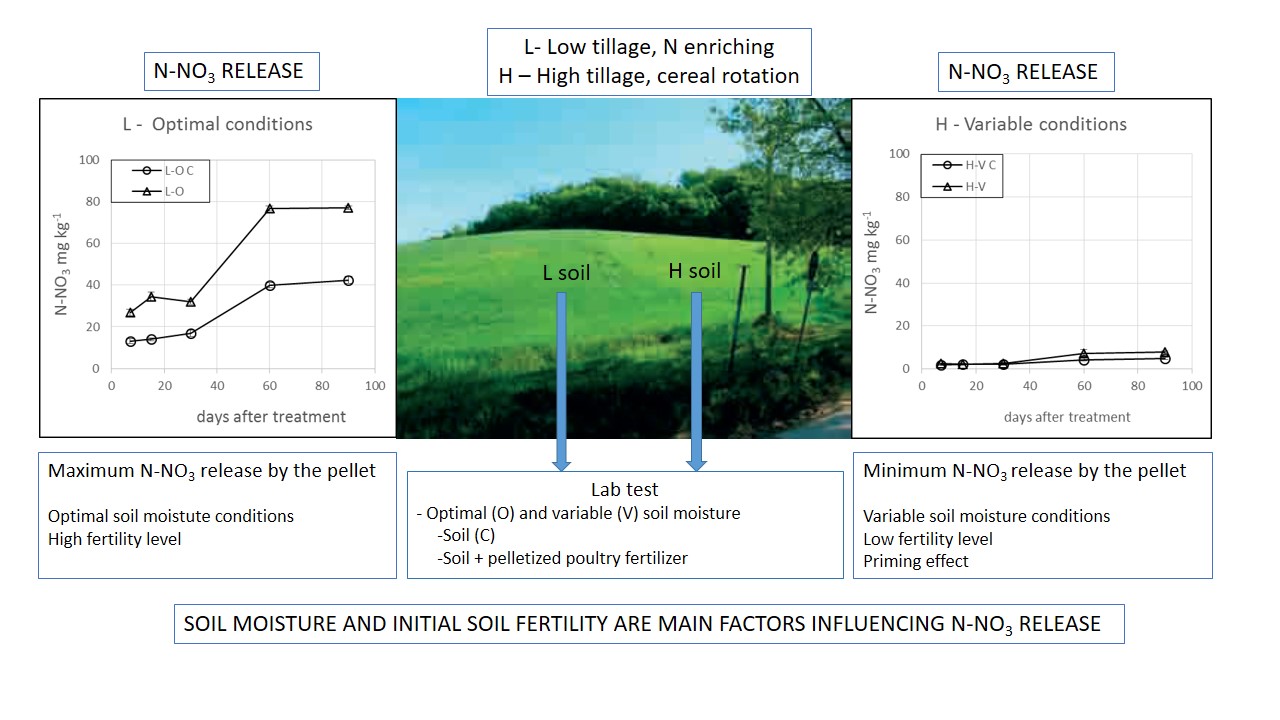Volume 46, 2022
Liming and grazing intensities effects on soil mineral nitrogen throughout the pasture cycle in a subtropical integrated crop-livestock system
06/abr/2022
ABSTRACT Grazing intensity is a preponderant factor for the success of integrated crop-livestock systems (ICLS). Management of grazing intensity impacts soil organic matter (SOM) dynamics, soil reacidification process, and amount and quality of residues added to the ICLS. Consequently, the soil mineral nitrogen (N) forms may present different behavior throughout the pasture cycle, because they are directed linked to SOM and soil acidity dynamics. This study aimed to evaluate the impact of grazing intensities and liming in the temporal variation […]
Soil characterization and drainage effects in a savanna palm swamp (vereda) of an agricultural area from Central Brazil
21/mar/2022
ABSTRACT Brazilian palm swamps (veredas) are fundamentals in the hydrological balance of watercourses in the Brazilian savanna (Cerrado). The “sponge effect” of their soils is the main factor controlling local hydrology, storing rainwater, and functioning as headwaters. The restricted knowledge of these tropical ecosystems has led to increased losses, poor preservation, and reduction in their ecosystem services. Veredas have become refuges surrounded by croplands, often drained and inappropriately managed. This study shows the impacts of anthropization on soil processes and […]
Brazilian scenario of inoculant production: A look at patents
10/jan/2022
ABSTRACT Technological advances have demonstrated the need for intellectual property rights, and patent granting is one of its most widespread forms. This includes the protection of inoculant formulations for agriculture, in which Brazil is a leader. This study aimed to analyze the number of patents for formulations of biological inoculants for agriculture in Brazil and the microorganisms used. An advanced search was performed in the National Institute of Industrial Property database, using the title and abstract fields. The indexers included […]
Using splines in the application of the instantaneous profile method for the hydrodynamic characterization of a tropical agricultural Vertisol
06/abr/2022
ABSTRACT An important aspect in the study and understanding of the physical phenomena involved in water movement in the soil-plant system is the need to carry out the hydrodynamic characterization (HC) of non-saturated field soils. Studies of this type have been widely developed in soils of temperate climates, but they are infrequent in the tropics, hence there is a need for further research in tropical Vertisols under field conditions. Hydrodynamic characterization consists of finding the functional relationship between soil hydraulic […]
Nitrogen use efficiency and grain yield of corn hybrids as affected by nitrogen rates and sowing dates in subtropical environment
13/jan/2022
ABSTRACT Delay of sowing date in subtropical environments with long growing seasons can modify the yield response of corn hybrids to nitrogen (N) fertilization. This study evaluated the effects of the sowing time, and N top-dress rate on corn hybrids’ yield and N-use efficiency with different cycles. Two field experiments were carried out in subtropical environment of southern Brazil. The following factors were investigated: corn hybrids (AG9025, super early cycle and P30F53, early cycle), sowing times (early and late spring), […]
Soils with dark subsurface horizons in saline basins in the Brazilian Pantanal
04/mar/2022
ABSTRACT Soils in the Brazilian Pantanal classified as Espodossolos and registered in the literature diverge from the central concept of pedogenesis by podzolization, especially due to the high values of pH and basic cations, although the morphology is similar to that of spodic horizons. In this sense, this study hypothesized that the neutral to alkaline conditions along the edges of the saline basins in the Lower Nhecolândia region do not inhibit the podzolization process nor the development of spodic soils. […]
Best tillage practices for eucalyptus growth and productivity: A review on the Brazilian experience
02/fev/2022
ABSTRACT Commercial eucalyptus forestry has significantly increased in the last decades to supply the growing demand for forest goods (pulp, paper, sawmill, by-product industries, and biomass for bioenergy and biofuels). Among factors most influencing forest productivity, the soil physical environment is very important and can be harmful or beneficial to trees. In the effort to increase environmental and economic sustainability of commercial plantations, in this literature review, we summarize relationships between soil type and properties, forest rotation, and forest growth […]
Soil-plant-microbiota interactions to enhance plant growth
28/jan/2022
ABSTRACT The nature of the soil is shaped by the presence of roots and the soil microbiota. Bacteria, archaea and fungi profoundly alter plant growth and, in turn, depend on root exudation of carbon-rich and energy-yielding compounds. The microbial communities act as facilitators of plant processes by secreting plant growth regulators, solubilizing minerals, providing N for plant growth, altering plant immune responses and competing with plant pathogens. Characterizing and engineering the processes driven by the multiple microbial taxa that make […]
Ultramafic soils and nickel phytomining opportunities: A review
07/abr/2022
ABSTRACT Ultramafic soils are originated from ultramafic rocks such as peridotite and serpentinite and are highly enriched in metals (e.g., Ni, Cr, and Co) and depleted in plant nutrients (e.g., P, K, and Ca). Such characteristics make these soils unfavorable for agriculture and have raised environmental concerns on metal release to the environment. From another perspective, ultramafic soils host a diverse flora with higher endemism than surrounding non-ultramafic areas, which has provided scientists with an opportunity to investigate the evolutionary […]
Nitrogen release from pelletized poultry fertilizer in two soils: influence of soil moisture and microbial biomass
28/jan/2022
ABSTRACT Nitrogen release from organic amendments, e.g., from organic agriculture, is a key process to raise soil fertility to sustain crop production in low environmental impact agroecosystems. This study aimed to investigate nitrogen release from a pelletized organic amendment containing poultry litter, guano and pot ale applied to soil from a field under two different management systems: an alfalfa-based crop rotation, enriched with N by the legume, under low-intensity tillage and a cereal-sunflower crop rotation under high-intensity tillage. Both sample […]

